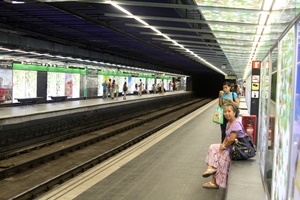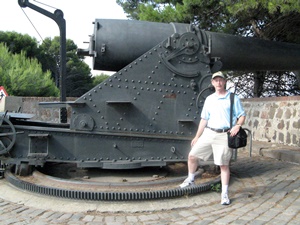Montjuďc is approximately 600 feet tall and has a commanding view of Barcelona’s harbor to its east. This being the case, the hill is a natural spot to place defensive fortifications, and there is evidence of such fortifications dating back to at least the 11th Century A.D. These fortifications suffered from wear and tear and neglect, and in 1640 they were replaced by a new fort during a revolt against King Philip IV. The fort saw action over the ensuing hundred years, with its ownership being passed back and forth during the War of the Spanish Succession, early in the 18th Century. In 1751 it was decided to build a proper castle in the spot, so the 1640 fort was demolished, and a new castle (essentially the one there today) was built over the next 50 years.
During this period, the castle became a scientific footnote: in 1792 two French astronomers set themselves the task of creating a definitive reference length for the meter, a task which eventually resulted in the delivery in 1799 of the official “meter bar” to the French Legislative Assembly. To determine this length, the astronomers decided to carefully measure the distance between Dunkirk, France and Barcelona, two cities of known latitudes located at the same longitude. For the reference point in Barcelona, Montjuďc Castle was used. Using this measurement, the distance between the North Pole and the Equator could be calculated, and the meter at that time was defined to be one ten-millionth of this distance.
Following this scientific interlude, the castle was captured by Napoleon’s forces in 1808, and then during the politically turbulent 19th and early 20th Centuries was frequently used as a prison for political prisoners, many of whom were executed there by firing squad (a widely-audible message to the citizenry to behave themselves). This practice continued into the Franco regime, when Franco had the Spanish Civil War era president of Catalonia executed here in 1940 (he had been extradited back to Spain from France by the Nazis), among many others. The castle was eventually turned into a military museum in 1963. More information can be found at their website.
Getting to Montjuďc Castle from central Barcelona can be something of a challenge, as the castle is on top of a 600-foot hill. Unless you know about the funicular, that is. This is a short-distance tram that takes you from the Paral.lel Metro station to a station most of the way up the hill. It’s not very scenic, as most of the route is inside tunnels, but it is very efficient at getting you up the hill. But not all the way up the hill, as we discovered on emerging from the station. The upper funicular station turns out not to be very close to the castle, and finding the castle can involve some additional uphill walking and a certain amount of head-scratching. We eventually arrived at the castle in this manner, but there turned out to be an easier way. Near the funicular station there was a station for a hanging-gondola ride, called the Telefčric de Montjuďc. When we saw this it wasn’t obvious to us where the other end of the ride was, so we didn’t take it. But the upper station of the Telefčric is very close to the castle, so the ride can save you a lot of walking. I say “you”, as it didn’t do us any good at all, and it seems that it should be helpful to somebody. But be warned that the ride isn’t cheap.
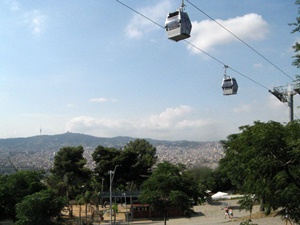
Telefčric de Montjuďc Med Lrg |
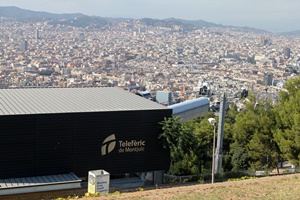
Station Near Castle Med Lrg Xlg |
The castle is a large, sturdy-looking stone building which is surrounded by a moat and several 20th-Century artillery pieces. The moat is empty and has been planted with grass and flowers. I don’t know whether the artillery pieces ever saw any use during the 20th Century. From a glance down one of the barrels, it seems they’re now in use as secondary trash receptacles.
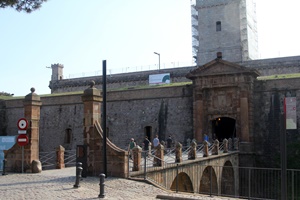
Montjuďc Castle Med Lrg Xlg |
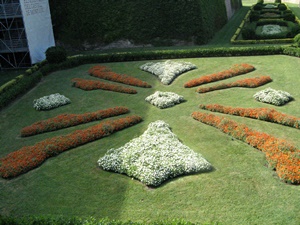
Flowers in "Moat" Med Lrg |
We crossed a bridge into the castle but didn’t find the castle itself to be all that interesting. The castle walls were very thick and surrounded a square courtyard which was empty, except for a couple of kids kicking a soccer ball around and some tables and chairs that seemed to indicate that there was a place to buy food and drink.
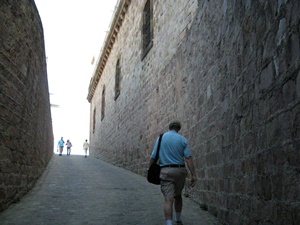
Bob Entering Castle Med Lrg |
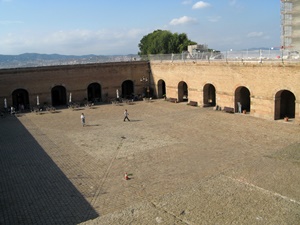
Castle Courtyard Med Lrg |
But we found a stairway to the top of the wall and found the view from the wall to be very impressive. The entire harbor was laid out before us, with the business-oriented, container ship intensive part of the harbor to the south, the tourist-oriented, pleasure boat intensive part to the north, and an apparent cruise ship dock in the middle.
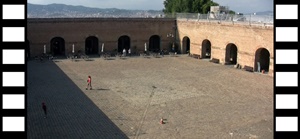
Castle Courtyard and Top of Wall MP4-Sml MP4-Med WMV-HD |
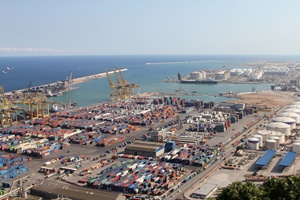
Harbor with Shipping Containers Med Lrg Xlg |
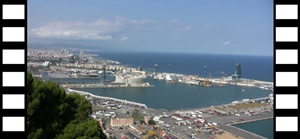
Cruise Ship, Harbor and Waterfront MP4-Sml MP4-Med WMV-HD |
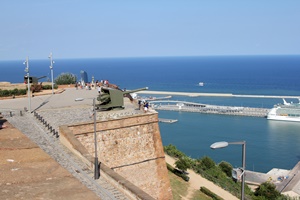
Harbor and Guns Med Lrg Xlg |
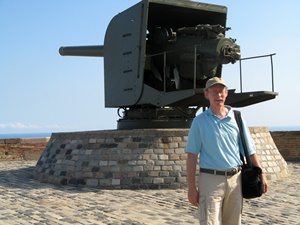
Bob and Another Gun Med Lrg |
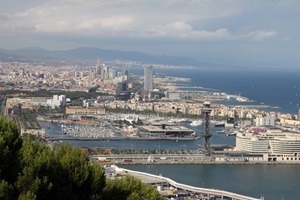
Harbor and Waterfront Med Lrg Xlg |
We walked around on the wall for awhile, looking at the surroundings and the castle itself from different angles, and then we exited and started back down the hill.
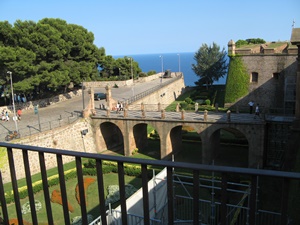
Entry Bridge Med Lrg |
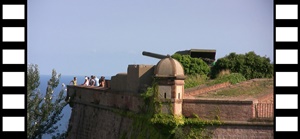
Guns and Castle Wall MP4-Sml MP4-Med WMV-HD |
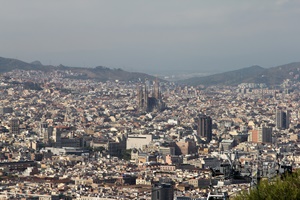
Sagrada Família and Barcelona Med Lrg Xlg |
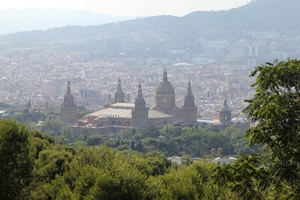
Museu Nacional d'Art de Catalunya Med Lrg Xlg |
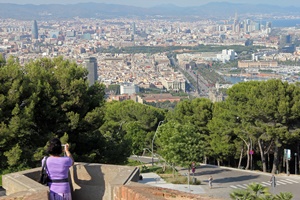
Nella and Barcelona Med Lrg Xlg |
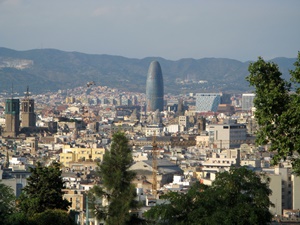
Agbar Tower Med Lrg |
We planned on returning via the funicular as we’d come, but then we noticed an alternative way to get off the hill, one that promised us a much better view…
